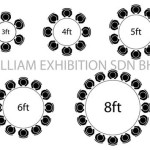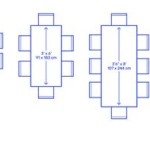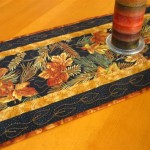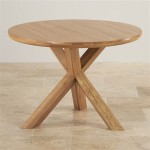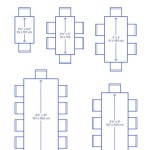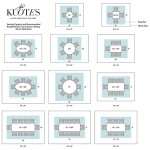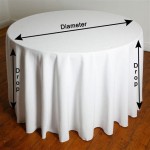Understanding Depth and Table in Diamond Grading
The beauty and brilliance of a diamond are intricately linked to its cut, which is the arrangement of its facets and how they interact with light. Two crucial parameters influencing this light performance are the diamond's depth and table percentages. While often considered technical aspects, understanding these measurements helps both professionals and consumers appreciate the factors that contribute to a diamond's fire, brilliance, and overall aesthetic appeal.
The depth and table percentages are ratios that describe the proportions of a diamond in relation to its diameter. These ratios, along with other measurements like crown angle and pavilion depth, significantly influence how light enters the diamond, reflects internally, and exits to the observer's eye. When these proportions are within optimal ranges, the diamond exhibits maximum brilliance, fire (dispersion of light into spectral colors), and scintillation (sparkle). Deviations from these ideal ranges can result in a dull or lackluster appearance.
The Significance of Diamond Depth Percentage
The depth percentage is calculated as the diamond's total height divided by its average diameter, expressed as a percentage. The total height is the distance from the table (the large, flat facet on the top of the diamond) to the culet (the pointed or slightly truncated bottom facet). The average diameter is calculated by measuring the diamond's width at several points around its girdle (the widest part of the diamond) and averaging these measurements.
A diamond with a very high depth percentage (often referred to as being "deep") may exhibit light leakage through the pavilion facets. This means that instead of reflecting light back to the observer, light rays escape from the bottom of the diamond, resulting in a diminished brilliance. The diamond may also appear smaller than its carat weight would suggest, as much of its mass is concentrated in the depth rather than contributing to its face-up appearance.
Conversely, a diamond with a very low depth percentage (referred to as being "shallow") may also suffer in light performance. In this case, light rays may enter the diamond through the table and exit directly through the pavilion facets without undergoing sufficient internal reflection. This "fisheye" effect, where a reflection of the girdle is visible through the table, is a common consequence of shallow cut diamonds. These diamonds also tend to lack fire and scintillation, appearing flat and lifeless.
The ideal depth percentage range typically falls between 58% and 63% for round brilliant cut diamonds. However, this range can vary slightly depending on other cut parameters. For fancy-shaped diamonds (such as princess, emerald, or oval cuts), the optimal depth percentage range can be significantly different, requiring specific consideration for each shape.
It's important to note that the depth percentage is just one factor to consider when evaluating a diamond's cut. A diamond with a depth percentage within the ideal range may still have other cut imperfections that negatively impact its brilliance. Therefore, it is crucial to consider the depth percentage in conjunction with other cut parameters, such as the table percentage, crown angle, and pavilion depth.
Furthermore, different grading laboratories, like the GIA (Gemological Institute of America) and AGS (American Gem Society), may have slightly different standards for assessing cut quality and the acceptable range for depth percentage. These differences arise from the methodologies used to analyze light performance and the relative importance assigned to different cut parameters.
The Significance of Diamond Table Percentage
The table percentage is calculated as the width of the table facet divided by the average diameter of the diamond, expressed as a percentage. The table facet is the largest facet on the top of the diamond, and its size significantly influences the amount of light that enters the diamond.
A diamond with a very large table percentage may allow too much light to enter, resulting in a reduction in fire and scintillation. Light may pass straight through the diamond without undergoing the necessary internal reflections to create a vibrant display. In these cases, the diamond may appear glassy or lack contrast between light and dark areas.
On the other hand, a diamond with a very small table percentage may restrict the amount of light that enters the diamond, leading to a diminished brilliance. Light rays may be blocked or reflected away from the diamond, resulting in a dull or lifeless appearance. The diamond may also appear smaller than its carat weight would suggest, as the smaller table restricts the face-up area.
The ideal table percentage range typically falls between 54% and 60% for round brilliant cut diamonds. Similar to the depth percentage, this range can vary depending on other cut parameters and the specific grading laboratory. A slightly larger table percentage may be acceptable if the diamond has a shallower depth percentage and a well-proportioned crown angle.
The table percentage is particularly important in round brilliant cut diamonds because it directly affects the symmetry and balance of the light return. A well-proportioned table allows for even distribution of light across the diamond, creating a uniform and symmetrical pattern of brilliance and fire. An imbalanced table, either too large or too small, can disrupt this symmetry and negatively impact the diamond's overall appearance.
Like the depth percentage, the table percentage should not be considered in isolation. Other cut parameters, such as the crown angle, pavilion depth, and girdle thickness, also play a crucial role in determining the diamond's light performance. A diamond with an ideal table percentage may still have other cut imperfections that detract from its brilliance.
Interplay Between Depth and Table
The depth and table percentages are not independent variables; they are interconnected and influence each other's impact on a diamond's light performance. A change in one percentage often necessitates a corresponding adjustment in the other to maintain optimal brilliance and fire. For example, a diamond with a shallower depth percentage may require a smaller table percentage to prevent light from escaping through the pavilion facets.
The crown angle and pavilion depth are also crucial elements that work in conjunction with depth and table to determine the path of light within the diamond. The crown angle is the angle between the bezel facets (the facets just below the table) and the girdle plane. The pavilion depth is the distance from the girdle to the culet, expressed as a percentage of the diamond's average diameter.
A well-cut diamond will have a balanced combination of depth, table, crown angle, and pavilion depth that maximizes light return. The light enters through the table, is reflected internally by the pavilion facets, and then exits through the table and crown facets, creating a brilliant and fiery display. When these proportions are optimized, the diamond exhibits a harmonious balance of brilliance, fire, and scintillation.
Understanding the interplay between these cut parameters requires a comprehensive knowledge of diamond optics and light behavior. Modern diamond grading laboratories utilize sophisticated computer models and light performance analysis tools to evaluate the cut quality of diamonds and provide accurate assessments of their brilliance, fire, and scintillation.
Ultimately, the ideal combination of depth and table percentages, along with other cut parameters, depends on the specific diamond shape, size, and intended use. While general guidelines exist, individual preferences and aesthetic considerations may also influence the selection of a diamond. Consulting with a qualified gemologist or diamond expert can provide valuable guidance in choosing a diamond with optimal cut quality and light performance.

Diamond Table And Depth Percentage Steven Stone

The Significance Of Diamond Depth And Table Percentages

Diamond Depth And Table Here S Everything You Need To Know

Expert Guide How To Calculate Diamond Depth Percentage

Diamond Anatomy Explained

The Brilliant Cut Diamond Jewelry Secrets

How To Pick A Round Diamond

Diamond Table And Depth Everything You Need To Know

Ideal Diamond Cuts

Runder Schliff Brilliant Diamant Form Green World Diamonds
Related Posts

